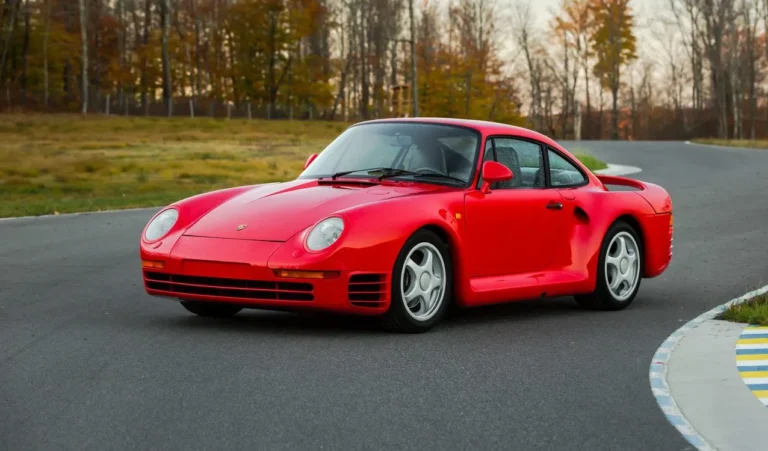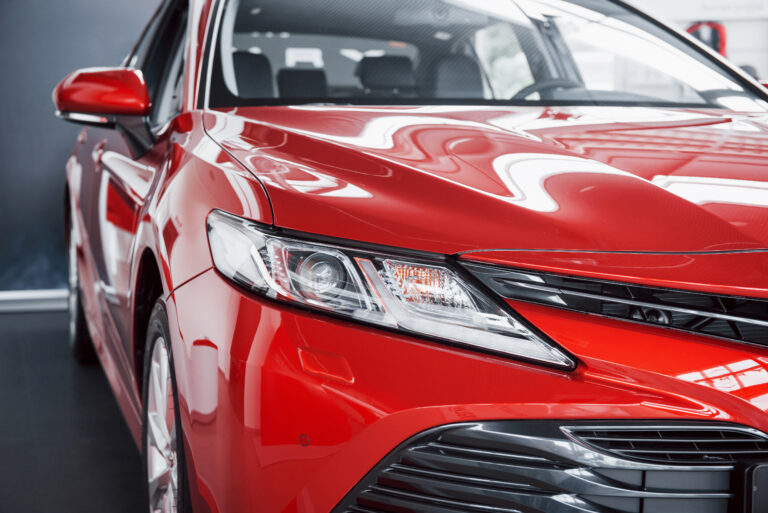
This image is about Porsche GT3 RS
How Fast is the Porsche GT3 RS?
The Porsche GT3 RS is a name that excites and commands awe among sports car aficionados. Considering that it is designed not solely as a speed machine but also as a car that will run the track, the title of the GT3 RS is one of the highest honors in the automotive world. Nevertheless, like any other aspect of life, the milestones attained in this case differ according to each individual.
In this article, we will review the limits of time using statistics and life motorsport times, as well as by determining the proportions of the speed of three Porsche GT3 RSs.
The Legacy Of Speed: What Is The Porsche GT3 RS?
The abbreviation “RS” or “Rennsport” explains why there is a Porsche 911 GT3 RS and, late, its racing elder brother, the GT3 RS. As they are undeniably one and unmatched derivatives, so they are the flagships of flags, perfect by definition, covering both motor enthusiasts and competition fanciers. It satisfies all aristocrats with horsepower needs, meeting its stupendous specifications.
Powertrain Overview: What’s Under The Hood?
Porsche never disappoints with its engineering input, and the raw output of the latest 911 GT3 RS (992) features an astonishing roar emanating from its split-six engine, complementing the 518 hp and 343 lb-ft of torque it produces. Other competitors might top Porsche’s numbers as they sit beyond 800 hp, but supercars shine in how precisely they use their power—the kind of refinement that sets them apart is what makes the GT RS special, like all other Porsches.
Engine Specs
- Engine Type: Flat-six, six cylinders that are naturally aspirated.
- Horsepower: 518 horsepower.
- Torque: 343 pound-feet of torque.
- Transmission: Seven-speed dual-clutch automatic (PDK).
- Drivetrain: Rear wheel driven.
The flat-six in modern performance cars has become rather uncommon; however, more and more drivers can expect it to scream like a race car up to 9,000 RPM.
How Fast Do They Go (Acceleration Figures): 0–60 and Beyond
Let’s take a look at the one long acceleration stretch the Porsche GT3 RS can do.
- 0-60 mph: 3.0 seconds
- 0-100 mph: 6.9 seconds
- Quarter mile: 11.8 seconds at 129 mph
- Top Speed: 184 mph (296 km/h)
Even without a turbo, the GT3 RS shines due to its lightweight structure and PDK transmission, which works with close-ratio gears.
Speed Goes Both Ways – Aerodynamics
Porsche GT3 RS shines above all else because besting competitors requires skill, and new designs always help improve your edge over the rest. Indeed, with these changes, the 992 GT3 should set even greater benchmarks, increasing efficiency relative to older models.
Key Aero Features
- Active Aero Components
- F1 Style Rear Wing with Drag Reduction System
- Front Splitters and Diffusers for increased downforce
- Underbody Ventilation to enhance ground effect
At a top speed of 177 mph, the GT3 RS generates well over 1895 lbs of downforce, which is about double what the previous generation (991.2) was capable of producing.
Light Reivindicates Right – Chassis and Weight
The weight reduction benefits her agility, giving her precise control over handling and response, which enables Porsche to build better-balanced cars, such as the GT3 RS shown today.
- Curb Weight: 3,268 lbs (1,482 kg)
- Material Use: Carbon fiber hood, roof, and body panels
- Wheels: Optional magnesium with Weissach Package
Porsche continues to focus on weight reduction for improved performance without compromising rigidity.
Track Times: How Does It Perform on The Circuit?
Nürburgring Nordschleife
Most hypercars struggle to match the Porsche 911 GT3 RS (992)’s record lap time of 6:49.328, often relying on outdated technology or doubling their power.
Other Track Results
- Hockenheim GP Circuit: 1:43.00
- Laguna Seca: 1:29.90
- Silverstone: Competitive with Ferrari lap times
This serves as further evidence that vehicles require a balanced, multi-faceted design approach that incorporates acceleration alongside cornering grip, braking abilities, and stability.
Suspension and Handling
Detailing the refinements made to assist in turning a vehicle into a smoother machine for sharper turns.
Speed-checks Come in Myriad Options
This specific vehicle has integrated race-border collared suspension enhancements touted at:
- Double wishbone front suspension
- Rear multi-link setup
- Adjustable coilovers and sway bars
- Rear wheel steering tailored towards brisk turn-in
Specialized Tires
- Michelin Pilot Sport Cup 2 R
These enhance benchmark levels that are difficult to attain in a formula that combines extreme cornering grip with minimal body roll, frequently forming a seamless synergy.
Braking Performance: Speedy Stopping
Every fast-moving object requires the ability to slow down and come to a complete stop swiftly. The braking system is considered one of the finest within off-the-shelf vehicles and is present in the GT3 RS:
- Standard: Steel brakes with 6-piston front callipers
- Optional: Porsche Ceramic Composite Brakes (PCCB)
- 60-0 mph Stopping Distance: Approx. 95 feet
These brakes are capable of enduring considerable performance stress during successive high-speed laps.
Driving Modes And Customization
The GT3 RS comes with several addable multi-configurable drive modes that empower drivers to tailor-dial settings such as:
- Dampers (compression and rebound)
- Stability and traction control thresholds
- Active aero component movements
- Throttle response alongside shift logic
- Differential lock tuning
Interior Details: Simple But Effective
GT3 RS interior design emphasizes weight reduction alongside performance and includes:
- Carbon fiber bucket seats
- Alcantara steering wheel with drive mode rotary
- Fire extinguisher-equipped roll-cage from Weissach Pack
- No rear seats with optional infotainment appear.
This configuration allows the driver to experience every sound and feel directly through shifts.
Sound and Emotion: A Multi-Channel Speed Phenomenon
In this section of the text, we will examine and analyze how sound can be intimately related to feelings or emotions in certain genres of art. Moving fast is a sensation that goes hand in hand with being rapidly and heavily compressed into your seat, feeling yourself being pinned back by acceleration. At the same time, sound becomes part of the experience as the engine revs hit 9000, tiresome singing in a high shriek, a mechanical shout.
Everything else fades away when I am fully immersed in sports driving, offering an irreplaceable and elating experience. The joy is amplified when the engine is powered to full throttle.
Comparison with Other Supercars
| Car | 0–60 mph | Top Speed | Nürburgring Time |
| Porsche GT3 RS | 3.0 sec | 184 mph | 6:49.3 |
| Ferrari 488 Pista | 2.8 sec | 211 mph | 7:00.0 |
| Lamborghini Huracán STO | 3.0 sec | 193 mph | 6:59.9 |
| McLaren 765LT | 2.7 sec | 205 mph | 6:47.0 |
Examining these additional figures for assessment alongside other cars, it becomes clear that the strength and disproportionate use of supercharged muscle might seem like a complete understatement. However, owning such a car allows one to realize what love for detailed engineering means when combined.
Daily Driving vs Track Use
Pros for Street Use
- Incredible road feel
- Stunning looks
- Prestige and exclusivity
Cons for Street Use
- Stiff suspension
- No rear seats
- Low clearance and loud exhaust
Still, many enthusiasts love driving the GT3 RS even on daily errands like shopping.
Technology and Usability Features
Wherever you go, sports cars come with a range of technology-related features. Some of these include:
- Porsche Stability Management (PSM)
- Advanced traction control
- Front axle lift system
- Optional front and rear cameras
These features enhance the car’s track performance and usability, making it more competitive than other cars specifically designed for the track.
Customization and Weissach Package
The Weissach Package is designed to ramp up speed as well as provide some additional exclusivity that includes:
- Roof, anti-roll bars, and rear wing made of carbon fiber
- Roll cage made of titanium.
- Optional magnesium wheels
- Reduction in weight surpassing 40 pounds
Every millisecond counts in a race, so adding this package can make a significant difference.
GT3 RS Verdict: Realistically, How Fast Is It?
Porsche has no reservations about selling its new model, the GT3 RS, as an extreme-performance vehicle with speed as its primary target. The 0-60 mph of three seconds, maximum speed of 184 mph, and a sub-seven-minute Nurburgring lap complement its acceleration capabilities in a very impressive manner.
Its balance is solid; mastery in engineering is showcased throughout. It corners excellently, and high-speed confidence with finesse completes the driving mastery checklist.
The GT3 RS features a naturally aspirated engine for enhanced responsiveness and rapid throttle response.
FAQs: Porsche GT3 RS Speed And Performance:
Is The Turbo S Quicker Compared To The Porsche GT3 RS?
While the Turbo S has some straight-line superiority, a track would favor the GT3 RS due to its better handling and track performance. Depending on the competition’s venue and route, however, results may vary greatly.
Fitted turbocharger: Does it come with one?
No, it’s naturally aspirated. That’s what gives it its high rev responsiveness and character.
Can I drive my GT3 RS daily?
Not entirely. Although it can be used every day, long drives become uncomfortable, and the noise level from other vehicles increases sharply. Suspension rigidity creates an unbearable driving style, which is not suited for me on a daily basis, rather than enjoying smooth rides.
What kind of fuel can be used?
To fully optimize the vehicle’s efficiency and performance, a minimum of 98 RON gasoline is recommended.
Is it possible to drive the GT3 RS on public roads?
Absolutely! It is completely road-legal in most countries, enabling you to operate it on all types of roads, including streets and highways.






